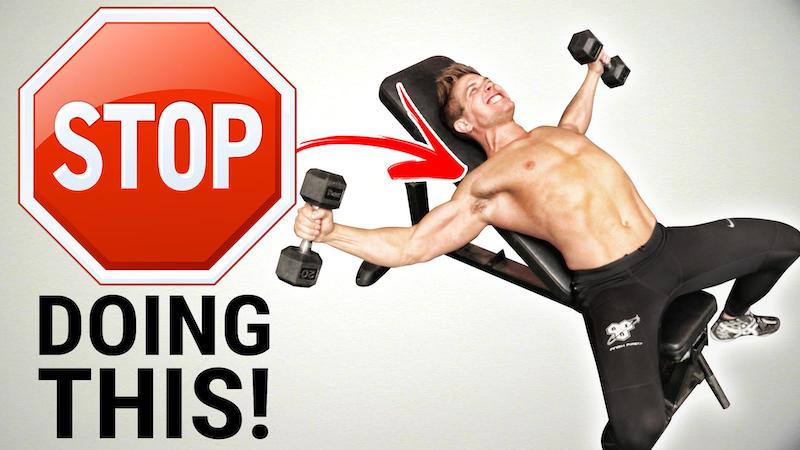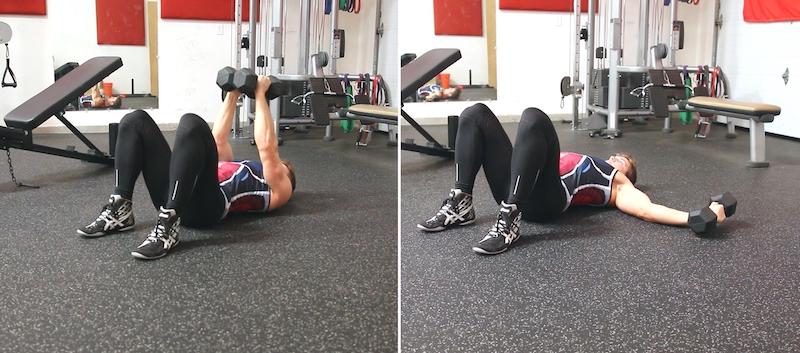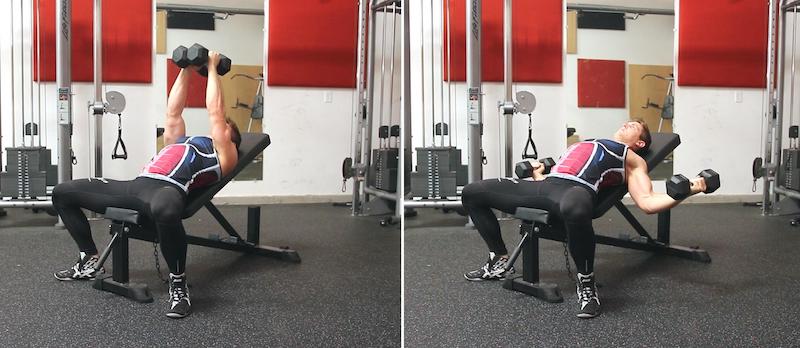Don't Do Chest Flys Like This!
Instant Fix!
There is a right way and a very wrong way to do chest flys. A lot of people stay away from this exercise, and there are videos online saying not to do this exercise because you’ll get injured, when in reality the injury only occurs because you’re not doing the exercise properly. However, people don’t want to tell you that, they just want to tell you ‘Don’t Do This Exercise’ or they’ll title their videos ‘Worst Chest Exercise’, because it’s clickbait and it gets views. I’m not about that, so I want to show you how to take the dumbbell chest fly, and how to build the confidence you need to perform the exercise properly, and then actually progress with it as well.
Don’t Forget To Warm-Up Your Shoulders!
First and foremost – you HAVE to stretch your shoulders and warm-up your shoulder joint. I cannot stress this enough, you should be warming up your shoulders before every single lift that you do. Even if you’re doing squats – your shoulders are being placed in a compromised position, meaning you risk injury if you don’t warm them up. There are a few different warm-ups you can do, but my favorite is shoulder breakers. This is a really easy way to warm up your shoulders, where you go front to back with a band or even a PVC pipe or wooden pole. You can also go down on the ground and do some dumbbell rotations, just do whatever you have to do to get those shoulders nice and warm before you start doing your flys (or doing any kind of workout).
What Is The Wrong Way To Perform Chest Flys?
Let’s first cover what people normally do wrong, and the reason why this actually happens. The first thing that happens when this exercise is done incorrectly is you see people start off looking pretty good, with their palms facing in. However, when they start to go down, you start to see the palms stop facing in, and instead they turn out to a more pronated position. This happens for a few different reasons.

The first reason is that people think they’re actually bringing the weights over their chest, just because they’re not sure where their hands are in relation to their chest and don’t realize they are bringing the weights over their shoulders. Secondly, most people forget to pack their shoulders when they do a dumbbell fly. Majority of people will pack their shoulders when doing a dumbbell bench press or a barbell bench press, but forget to pack them when doing flys.
Chest Flys: Proper Form
Shoulder packing is when you retract your scapula down and back. A really easy way to do this, like I have mentioned many times before, is when you get into position, you start on the very edge of the bench, then after leaning back you slide back along the bench. Utilize that slide back to help pack your shoulders down and back. Once you’re in position, you can now do proper form with this movement which is a slight bend in your elbows, coming down over your chest, and going down as low as you can before returning to the top of the movement. Some of you may think that my demonstration is too far down and risks a shoulder tear. However, if you pack your shoulders and do the movement correctly, then when you are at the bottom as low as you can go, you should NOT be feeling tension in your shoulders. You should be feeling it in your chest and you can do the exercise safely.

If you still have a hard time with this movement and still have a hard time feeling it in your chest after doing all of this, it’s because you lack the mind-muscle connection, you lack the strength, or maybe you’re still not comfortable enough doing this movement. If that is the case for you, I’m going to give you two variations to help you get more comfortable so you can incorporate this exercise safely into your routine.
Variation #1: Chest Fly (On Floor)
The first option is to get down on the floor and do the movement here. Some benefits of doing the movement on the ground is that you won’t have to worry about any sort of shoulder tear, because what’s going to happen is even if you lose control, the dumbbells are going to stop when they hit the floor. This means you’re not bringing your shoulders all the way back like I do on the bench, however, your shoulders should still be packed when doing this variation on the floor. Once the dumbbells hit the floor, you can just take your hands out, reset your position, and you’ll be just fine.

Also, if you’re not used to doing this with heavier weights, this is a good opportunity for you to grab weights that are a bit heavier. Keep that slight bend in your elbows, and practice the movement with heavier weights going up and down. You will still get a chest workout doing shoulder flys like this, as you’ll still get a hard contraction at the top. The main difference though, between doing it on the floor and doing it on the bench, is that you’re not going to be able to maximize the STRETCH at the bottom of the movement, obviously because the floor is preventing that. But, we’re doing that for a reason – to protect your shoulders, to get that mind-muscle connection right, so you actually feel those chest fibers activating.
Variation #2: Chest Fly (Incline)
If you want to go back to the bench after doing the floor variation, but you’re still not 100% comfortable with lying flat, then you’re going to do an incline dumbbell fly. The reason you’re going to do an incline dumbbell fly rather than doing the flat version is because the majority of you when doing this movement, because you’re on an incline, will instinctively bring your arms down over your chest. Granted, you will still see some people who lower the weight over their shoulders (it’s quite rare, but it does happen), but most of you are used to doing an incline dumbbell bench press with proper form. This means you’ll probably still instinctively come down to the sides of your chest, and you won’t have to worry about ripping and tearing through your shoulder. Once you get really good at the incline version of the dumbbell fly, you can then go into the flat version and get even more of a stretch on the chest in the bottom position.

Conclusion
You can nit-pick any exercise in the gym and say it’s dangerous, and I’ll tell you what, the most dangerous exercise you can do, and the one where you see the most injuries, is the barbell bench press. But I guarantee you that you won’t see those videos go viral because everybody WANTS to do the barbell bench press. That’s why people don’t talk about how dangerous it really is, and how bad it is for you in the compromised position it puts you in (which is why people can get pec tears).
For the chest fly, it’s a totally safe movement to do if you know what you’re doing and you do it right. If you want to incorporate the dumbbell chest fly into your current training program, what I like to do is keep it either as a finisher movement, or I like to superset it with my main lifts. For example, if I’m doing a dumbbell bench press, sometimes I’ll super set it with a dumbbell flat fly (4 sets of 10 reps per exercise), and if I go into my incline dumbbell bench press, I’ll superset that with an incline dumbbell fly (4 sets of 10 reps per exercise). That’s all it takes to get a really solid workout in!








